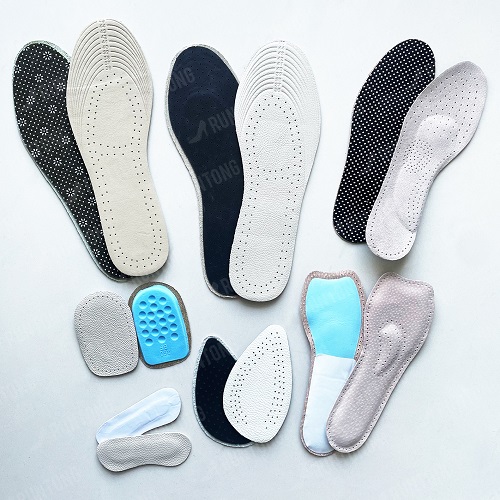In the world of footwear, the choice of insoles can significantly impact comfort, support, and overall foot health. Among the various materials used, leather stands out as a premium option renowned for its durability, comfort, and versatility. Understanding the different types of leather used for insoles can help consumers make informed decisions based on their unique needs and preferences.
Vegetable-Tanned Leather: Vegetable-tanned leather, treated with natural tannins found in plants, emerges as a top contender for insole material. Renowned for its sturdiness and firmness, this type of leather boasts exceptional durability. Its ability to conform to the shape of the foot over time provides excellent support, making it a preferred choice for orthotic insoles. Additionally, its rigidity and longevity contribute to its popularity among those seeking long-term comfort and reliability.
Full-Grain Leather: Full-grain leather, crafted from the top layer of the hide, retains the natural grain and markings of the animal, embodying a blend of durability and luxury. Highly resistant to wear, it proves ideal for insoles requiring sustained usage. Its smooth texture enhances comfort, offering a plush sensation with every step. The luxurious feel of full-grain leather adds an element of sophistication to footwear, elevating both style and substance.
Calfskin Leather: Calfskin leather, sourced from young cattle, epitomizes softness and suppleness. With its ability to mold effortlessly to the shape of the foot, it delivers exceptional cushioning and support. This type of leather offers a comfortable feel against the skin, making it a preferred choice for dress shoes and footwear where comfort is paramount. Calfskin leather insoles embody the perfect blend of comfort and style, enhancing the overall wearing experience.
Suede Leather: Suede leather, derived from the underside of the hide, boasts a soft, fuzzy texture that appeals to those seeking breathability and moisture-wicking properties. While not as durable as full-grain leather, suede leather excels in keeping feet dry and comfortable, making it suitable for casual or athletic shoes. Its excellent breathability enhances airflow, ensuring a cool and comfortable wearing experience even during prolonged use.
Kipskin Leather: Kipskin leather, sourced from young or small animals such as calves or goats, offers flexibility and pliability, making it ideal for insoles requiring a balance of support and comfort. Known for its ability to conform well to the foot, it provides a gentle cushioning effect, promoting all-day comfort. Kipskin leather insoles cater to individuals seeking both support and flexibility, accommodating various foot shapes and preferences.
In conclusion, the choice of leather for insoles depends on individual preferences, intended use, and specific foot conditions. Whether prioritizing durability, comfort, or a combination of both, each type of leather offers unique benefits that contribute to an enhanced wearing experience. By considering these factors, consumers can select the best leather for insoles that aligns with their needs, ensuring optimal comfort, support, and foot health.
Post time: May-29-2024







